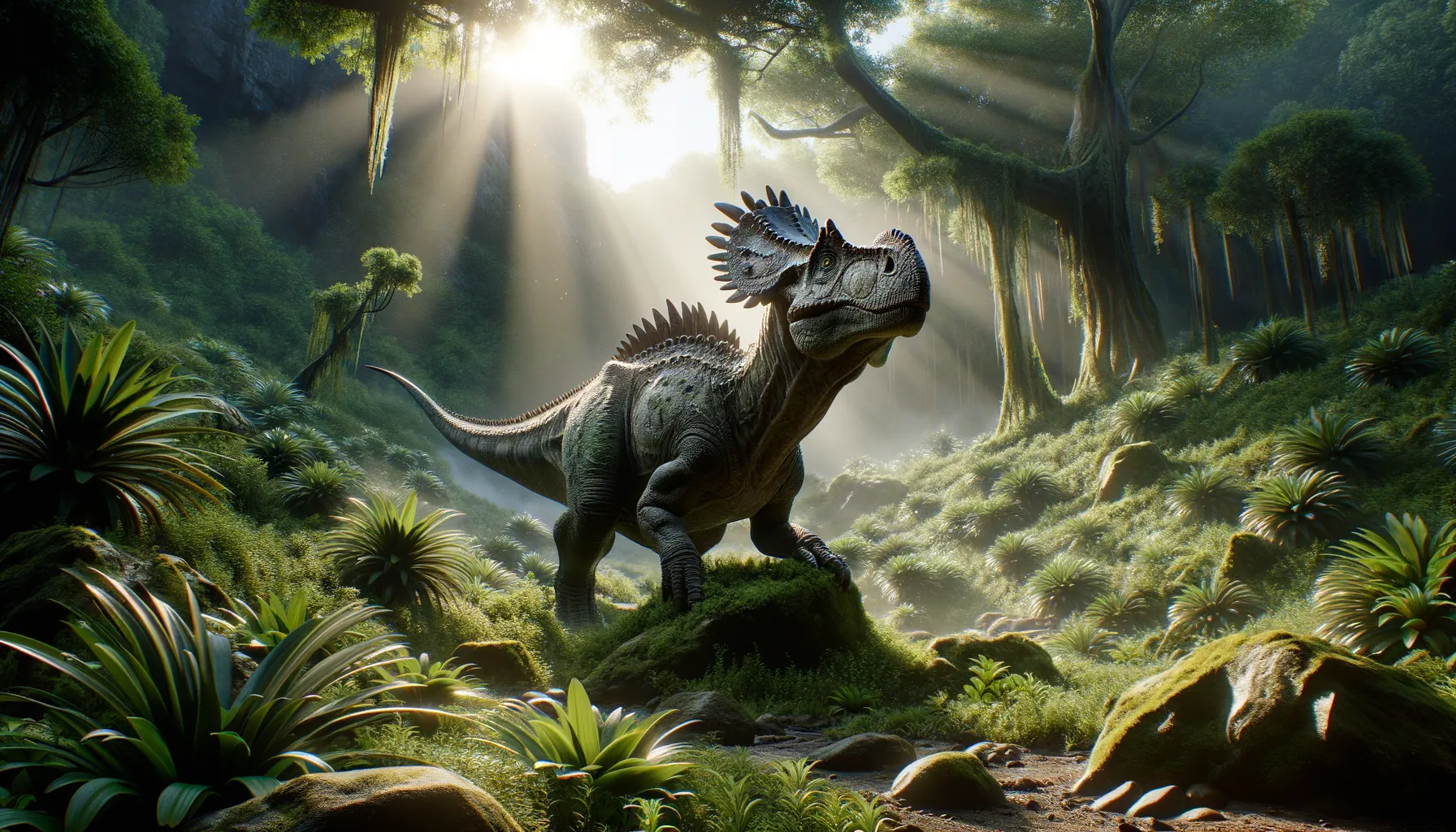
Dracopelta
Small but mighty with natural armor.
Period
Cretaceous
Length
Around 4 meters (13 feet) from head to tail.
Height
About 3 feet tall at the hips, low to the ground.
Weight
Approximately 1 ton, similar to a small car.
Dracopelta was a small, heavily armored dinosaur that roamed parts of modern-day Europe during the early Cretaceous period. Its sturdy build and protective bone plates made it well-adapted to withstand predator attacks. Despite its formidable defense, Dracopelta was a herbivore, feeding on the abundant plant life of its era. Its fossil findings have provided valuable insights into the diversity of early armoured dinosaurs and their adaptation mechanisms.
Diet
Dracopelta primarily consumed plants, including ferns and low-lying shrubs. Its heavily armored build indicates it was more of a browser than a grazer, feeding on vegetation at or near ground level.
Hunting
As a herbivore, Dracopelta did not hunt. Instead, it used its armor for defense against predators, relying on its impressive protection rather than speed or aggression.
Environmental challenges
Dracopelta faced a number of environmental challenges, including the need to find sufficient vegetation for sustenance in varying climates. Seasonal changes could have impacted food availability, influencing its feeding habits. Additionally, avoiding predators in its lush, predator-rich environment required constant vigilance and the use of its defensive adaptations.
Speed
Dracopelta was slow-moving, ideal for defensive strategies.
Lifespan
Estimated around 10 to 20 years in the wild.
First discovery
Discovered in Portugal in the 1970s.
Fun Facts
- Dracopelta means 'dragon shield', named for its protective armor-like plating.
- This dinosaur lived during the Upper Jurassic period, around 150 million years ago.
- Dracopelta was a small, herbivorous dinosaur, estimated to be about 3 meters long.
- It belonged to a group of dinosaurs known as ankylosaurs, famous for their thick, bony armor.
- Fossils of Dracopelta have been discovered in what is now Portugal, providing clues about its environment.
- Unlike the later ankylosaurs, Dracopelta did not have a clubbed tail.
- Dracopelta was one of the earliest members of its armored dinosaur group, showcasing early evolutionary adaptations.
Growth and Development
Dracopelta showcased slow but consistent growth, reaching full maturity over several years. Juveniles likely stayed near the protection of adults until they developed sufficient armor. Its development focused on strengthening its protective shell, which prioritized defense over rapid growth.
Habitat
Dracopelta inhabited lush, forested areas that offered ample vegetation. Its terrain consisted of dense underbrush where it could forage and effectively avoid large predators with its camouflage. The environment provided both cover and abundant plant life, crucial for its survival.
Interaction with other species
Dracopelta likely maintained a low profile to avoid confrontation with larger predators. Its diet ensured peaceful coexistence with other herbivores, competing primarily for food resources rather than territory. It may have formed loose herds for added protection against predators.
Natural lifespan
Dracopelta could live up to two decades in the wild, barring predator encounters.
Reproduction
Dracopelta likely reproduced by laying eggs, with nesting sites in safe, secluded areas. Its eggs were probably small, with multiple offspring hatched at once. Parental care, if it existed, was minimal, with youngsters relying on their natural instincts and developing armor for protection.
Social behaviour
Dracopelta was relatively solitary but may have formed small groups, especially during breeding seasons. Its social interactions were limited to mating and breeding, as well as foraging in groups for safety. Herd behavior could have offered additional protection from threats.
Fossil locations
The fossil remains of Dracopelta have primarily been found in Portugal, providing insights into its early Cretaceous existence. Its fossils are rare, and ongoing excavations in Europe continue to search for more to enhance understanding of its lifestyle. These findings help reveal the spread and adaptation of armored dinosaurs in their early evolutionary stages.
